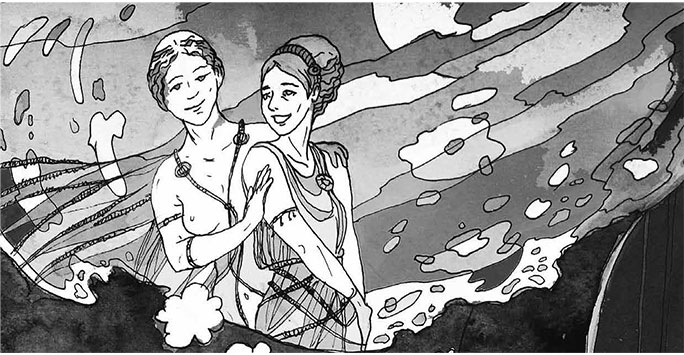
Heteronormativity, the idea that heterosexual identity and desire is considered the norm, is being transformed by the use of Queer Theory in archaeology. Queer Theory is used to explore aspects of culture that is traditionally rejected as valid depictions of gender and sexuality. Commonly used for gender representation at burial sites, the identity of deceased individuals is being radically transformed through the consideration of Queer relationships; intersexual identities, and non-binary status. The requirements used to identify biological sex is typically constructed through heteronormative approaches, where intersexual identities are rarely considered. In order to fill the gap in knowledge that heteronormativity fails in, scholars have been using Queer Theory to challenge socially constructed views of gender. First used in the 1990’s to offer a more balanced approach to gender, Queer Theory was used by various different fields, during a time that Third-Wave Feminism was at its height. During the Third-Wave, the concept that a male-dominating society does have an impact on the value of women led to the rise of Queer minority voices currently underrepresented.
A heteronormative approach to archaeological burial spaces results in a lot of unknown’s which largely affects our understanding of the past. Unknown sex results caused by the strict male/female categories neglects human remains which possess both male and female attributes, and results in a refusal to consider an intersexual identity. Same sex double burials introduce the possibility for Queer representation, but has been considered as sexual deviancy (Reynolds 2009: 170) alongside adultery and incest. Other interpretations try to break down the possibility for a Queer analysis by denouncing a homosexual relationship, and instead reasserting a heterosexual approach by suggesting a female double burial is the result of a woman and her maid, rather than a same-sex relationship.
The stereotypes which contemporary society places on the past has resulted in a highly patriarchal society, devoid of Queer representation. When interpreting burial spaces archaeologists need to be prompted to consider a Queer status, without favouring an elite male perspective. Normalising the consideration of a Queer status should begin at skeletal analysis, where remains with both male and female sex characteristics are not disregarded, but validated through the application of Queer Theory. The strict categories of sex determination do not allow for biological sex fluidity, and as a result, a significant number of individuals from the past are not only ignored, but not included as a part of human history. Through the misinterpretation of same-sex double burials, an under researched and valuable part of LGBTQ+ history is forgotten, and with it the female Greek poet Sappho’s hope being unfulfilled:
Someone, I tell you, will remember us, even in another time.
References
Butler, J. (1994) ‘More Gender Trouble: Feminism Meets Queer Theory,’ Differences: A Journal of Feminist Cultural Studies, Vol. 6, No. 2-3, Duke University Press.
Halperin, D.M. (1995) Saint Foucault: Towards a Gay Hagiography, Oxford, Oxford University Press.
Reynolds, A. (2009) Anglo-Saxon Deviant Burial Customs, Oxford, Oxford University Press.
Sedgwick, E.K. (1992) Between Men: English Literature and Male Homosocial Desire, New York, Columbia University Press.
Warner, M. (1999) The Trouble with Normal: Sex, Politics and the Ethics of Queer Life, Massachusetts, Free Press.